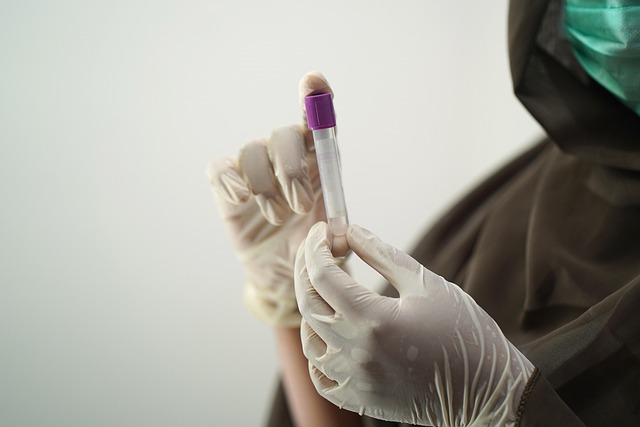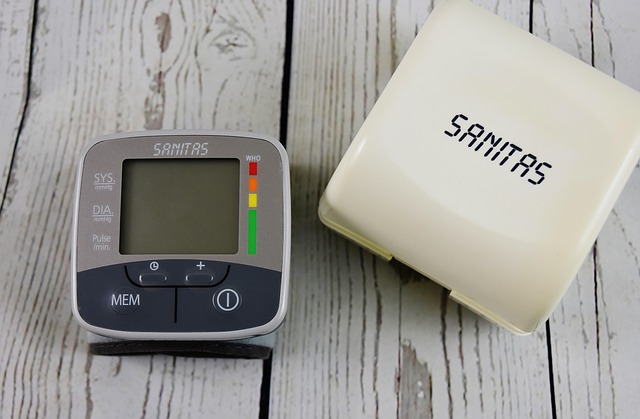At-home thyroid blood tests offer accessible, convenient ways to monitor metabolism and energy production. Measuring TSH, T3, and T4 levels helps identify imbalances linked to fatigue, weight changes, and mood shifts. Test results, interpreted by healthcare professionals, guide treatment for conditions like hypothyroidism and hyperthyroidism. Lifestyle adjustments, including diet, exercise, stress management, and monitoring, complement test findings for optimal thyroid health.
Uncover hidden health issues with at-home testing – specifically, the thyroid. Understanding thyroid function and hormones is key to recognizing imbalances that can affect energy levels, weight, and overall well-being. At-home thyroid blood tests offer convenient access to critical insights about your thyroid’s performance. This guide explores the benefits, interpretation of results, common imbalances, and lifestyle adjustments after diagnosis, empowering you to take charge of your thyroid health.
- Understanding Thyroid Function and Hormones
- Benefits of At-Home Thyroid Testing
- Interpreting Home Thyroid Blood Test Results
- Common Thyroid Imbalances and Symptoms
- Lifestyle Adjustments After Diagnosis
Understanding Thyroid Function and Hormones

Understanding how your thyroid functions is crucial when considering at-home thyroid blood testing. The thyroid gland, located in the base of your neck, plays a pivotal role in regulating metabolism and energy production throughout your body. It does this by releasing two primary hormones: thyroxine (T4) and triiodothyronine (T3). These hormones influence nearly every cell, organ, and system in your body, from heart rate to digestion and brain development. Imbalances in these hormones can lead to a range of symptoms, including fatigue, weight changes, and mood alterations, highlighting the importance of regular thyroid screening.
At-home thyroid blood tests offer individuals an accessible way to monitor their thyroid health without always requiring medical supervision. These tests typically measure levels of T4, T3, or both, providing insights into potential thyroid disorders such as hypothyroidism (underactive thyroid) or hyperthyroidism (overactive thyroid). By understanding the basics of thyroid function and hormone levels, individuals can make informed decisions about their health and consult with healthcare professionals for personalized guidance on treating any identified imbalances.
Benefits of At-Home Thyroid Testing

Uncovering thyroid imbalances with at-home testing offers several significant advantages. One of the key benefits is accessibility and convenience; individuals can perform these tests in the privacy and comfort of their homes, eliminating the need for frequent clinic visits. This is particularly beneficial for those with busy schedules or who prefer a more discreet approach to healthcare management. Moreover, home thyroid blood tests are often more affordable compared to traditional diagnostic methods, making them an attractive option for folks looking for cost-effective solutions.
Another advantage lies in their speed and efficiency. With at-home testing kits, results can be obtained quickly, providing individuals with timely insights into their thyroid health. This prompt feedback empowers people to take charge of their well-being and make necessary adjustments to their diet or lifestyle. Additionally, these tests are often designed to be user-friendly, ensuring that even those without medical training can interpret the results accurately. This self-empowerment is crucial for managing conditions like hypothyroidism or hyperthyroidism, where early detection and intervention can significantly impact long-term health outcomes, especially for best thyroid tests for adults. Is a home thyroid test accurate? Studies suggest they can be reliable when used correctly, offering a convenient and effective way to monitor this often overlooked gland.
Interpreting Home Thyroid Blood Test Results

Interpreting your home thyroid blood test results is an essential step in understanding your thyroid health. After receiving your kit, follow the instructions carefully for accurate sampling and processing. The typical home thyroid blood test checks TSH (Thyroid-Stimulating Hormone), T3 (Triiodothyronine), and T4 (Thyroxine) levels. Compare at-home results with the reference range provided by the testing lab to assess your thyroid function. Normal TSH levels usually fall between 0.4 to 4.0 mIU/L, while optimal T3 and T4 values can vary slightly but generally aim for 80-180 ng/dL for T3 and 5.5-12.0 mDL for T4.
If your results show abnormal levels, it could indicate signs you need a thyroid blood test in person. For instance, elevated TSH might suggest hypothyroidism, while low T3 or T4 can point to hyperthyroidism. However, do not self-diagnose; consult with a healthcare professional who can help interpret the findings and guide appropriate treatment, especially if you’re considering at-home vs. doctor’s thyroid tests.
Common Thyroid Imbalances and Symptoms

Thyroid imbalances are more common than many realize, and they can significantly impact overall health and well-being. The thyroid gland, located in the base of the neck, plays a crucial role in regulating metabolism and energy production. Two of the most prevalent thyroid disorders are hypothyroidism and hyperthyroidism.
Hypothyroidism occurs when the thyroid doesn’t produce enough thyroid hormone, leading to symptoms like fatigue, weight gain, dry skin, cold sensitivity, and constipation. On the other hand, hyperthyroidism is characterized by an overactive thyroid, resulting in increased energy levels, weight loss, anxiety, irregular heartbeats, and diarrhea. Recognizing these symptoms is essential, as early detection can lead to more effective treatment through lifestyle adjustments or medication. The benefits of at-home thyroid monitoring include convenience, accessibility, and the ability to track changes over time, especially for those with subtle imbalances. Understanding thyroid health 101 and knowing how to prepare for a thyroid blood draw are crucial steps towards proactive care. Regular checks can help manage these conditions effectively, ensuring optimal thyroid function.
Lifestyle Adjustments After Diagnosis

After receiving your results from a home thyroid blood test, making lifestyle adjustments can significantly help in managing any imbalances. If you’re diagnosed with a thyroid disorder, such as hypothyroidism or hyperthyroidism, implementing complementary remedies for thyroid disorders can be beneficial. These include adopting an anti-inflammatory diet rich in iodine and essential nutrients, engaging in regular physical activity tailored to your condition, and managing stress through techniques like yoga or meditation.
The benefits of at-home thyroid monitoring cannot be overstated. It allows you to track changes in your thyroid function over time, enabling prompt adjustments to your treatment plan. To prepare for a thyroid blood draw, ensure you follow the recommended fasting guidelines prior to the test. This typically involves abstaining from food and certain medications for a specified period to ensure accurate results. How to prepare for a thyroid blood draw includes getting adequate rest, staying hydrated, and avoiding excessive caffeine or alcohol consumption in the days leading up to the test.
Uncovering thyroid imbalances through at-home testing is a proactive step towards better health. By understanding your thyroid function and interpreting home thyroid blood test results, you can identify issues early on. Common imbalances like hypothyroidism and hyperthyroidism have manageable symptoms and treatable causes. Once diagnosed, lifestyle adjustments can significantly improve your overall well-being. Embrace the convenience of self-care with a home thyroid blood test to take control of your health journey.
